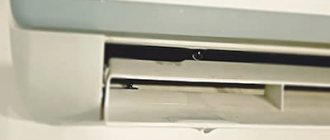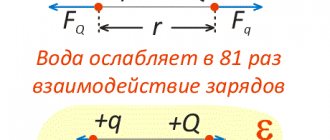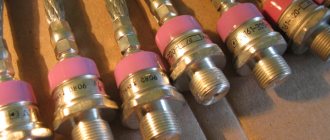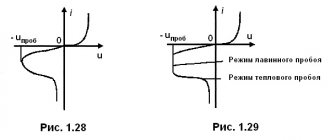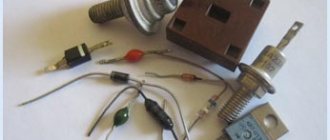What amount of electric current is considered fatal to a person?
The fibrillation threshold is an alternating current (50 Hz) strength of about 100 mA and 300 mA direct current, the impact of which for more than 0.5 s is likely to cause fibrillation of the heart muscles. This threshold is also considered conditionally fatal for humans.
Interesting materials:
How to record Google Meet? How to make an appointment for a child with a doctor through public services? How to record a video from IGTV? How to make an appointment with a proctologist in Moscow? How to make an appointment with a psychologist for free? How to make an appointment with a doctor through Emiyas? How to make an appointment with a doctor by phone? How to make an appointment at MFC online? How to write ordinal numbers? How to fill out form p13001?
Where does the current flow or where is the damn cathode?
There are things that you want to, what is called “unsee” - the term is quite established and understandable.
— Evgeny Grishkovets, talks about railway workers. (c) Performance “Simultaneously” And there are things that, well, you just can’t remember. This arises from the fact that the new concept cannot unambiguously cling to already known facts in the mind; it is impossible to build a new connection in the semantic network of facts. Everyone knows that a diode has a cathode and an anode. Everyone knows how a diode is indicated on an electrical diagram. But not everyone can correctly say where on the diagram what is.
Below the spoiler is a picture, after looking at which you will forever remember where the diode is the anode and where the cathode is.
I must warn you that you won’t be able to unsee this, so those who are not confident in themselves should not open it. Now that we have scared away the weak, let's continue...
Yes, it's that simple. The letter K is the cathode, the letter A is the anode. Sorry, now you will never forget it.
Let's continue and figure out where the current flows. If you look closely, the diode designation is an arrow. Believe it or not, the current flows exactly where the arrow points! Which is logical, isn't it? Further more - current flows " A
tkuda" (from the Anode) and "
Kuda
" (to the Cathode).
Transistor symbols also have arrows, and they also indicate the direction of current. Current is the directed movement of charged particles - we all know this from school physics.
What particles? Yes, any charged ones! These can be electrons carrying a negative charge and particles deprived of electrons - atoms or molecules, in solutions and plasma - ions, in semiconductors - “free electrons” or even “holes”, whatever that means. So, the easiest way to understand this whole zoo is this: the current flows from plus to minus, and that’s all. It is very simple to remember: “plus” - intuitively - is where there is “more” of something, in this case there are more charges (once again - it doesn’t matter which ones!) and they flow towards the “minus”, where there are few of them and are waiting. All other details are unimportant. Well, the last thing is the battery. The designation is also known to everyone, two sticks are longer, thinner, and shorter, thicker. So, shorter and thicker symbolizes a minus - a kind of “fat minus” - like in school, remember: “I give you a four with a fat minus
" This is the only way I remember, maybe someone will suggest a better option.
Now, you can easily answer the question whether the light bulb in this circuit will light up:
Happy April 1st everyone! Smile, gentlemen. Smile!
How to determine anode and cathode
If everything is quite simple with the battery (the pole and minus do not change places), then charging the battery is more complicated.
During charging, the difference between the higher and lower potentials increases, that is, the potential of the positive electrode becomes higher than its potential at rest - a charge accumulates, and the potential of the negative electrode becomes less than it is at rest. It follows that the positive electrode acts as an anode, and the negative electrode acts as a cathode.
When using the device, the potential of the positive electrode (anode) always remains greater than the potential of the negative electrode (cathode). But during the discharge/charge cycle, the role of the electrode changes : during discharge, the cathode becomes positive, and the anode becomes negative. During charging, the anode is positive and the cathode is negative.
If we are talking about solutions and electrophysical reactions in them, it is easier to remember that cations are always particles with a positive charge, which means they move towards minus. Anions are particles that always have a negative charge and move toward a positive charge.
Valera
The voice of the construction guru
Ask a Question
To remember where the plus and where the minus are, use a mnemonic rule. The words “cathode” and “minus”, as well as the words “anode” and “plus” have the same number of letters. During normal operation of any electrical device, current flows out of the cathode and flows into the anode. Even if we are talking about a metal core, since here the direction of the current is determined not by the displacement of electrons, but by the displacement of holes.
Scope of application
In industry, they use not only galvanic cells themselves (to produce electric current), but also electrochemical reactions that occur under the influence of current. The most famous is the production of thin-layer protective coatings on steel - from zinc, aluminum, zinc-aluminum alloys.
Electrochemistry
Electrolysis is the opposite of the operation of a galvanic cell: the reaction occurs under the influence of current. In this case, the plus of the power source is still called the cathode, and the minus the anode, which seems to contradict the above. This happens because the current from the positive terminal of the power source goes to the positive terminal of the battery, and in this case the latter can no longer be the cathode. As a result, the electrodes of the battery change places when charging, because the reaction occurs in the opposite direction.
Electroplating
Silver plating, gilding, chrome plating, galvanizing are the most well-known ways to use the substance deposition process. The principle of operation of such installations is the same: the product is immersed in an electrolytic bath, in which it acts as a cathode. Metal ions – cations – are deposited on its surface. In order for the product to become a cathode, the positive terminal of the power source is connected to it.
Vacuum and semiconductor electrical devices
The concept of cathode and anode, or rather plus and minus in vacuum and semiconductor devices is associated with the possibility of current flowing in only one direction or two. A semiconductor allows only forward current flow, and when a reverse type voltage is applied, current flows here, but extremely insignificantly. For a resistor, the question is not fundamental: it passes current in both directions.
The cathode and anode are the terminals of the diode - legs . The anode is connected to the positive side of the battery. It is called that because the diode's current flows into the anode anyway. An LED and even a vacuum one are connected in exactly the same way: the anode to the plus and the cathode to the minus.
For passive consumers, the cathode and anode (plus and minus) do not change. For active ones, capable of passing current in both directions, discharging and charging, the pros and cons may change. In a battery, the cathode is positive when discharging and negative when charging. For the correct use of devices and elements, it is important to remember one thing: for all energy consumers - electronic parts, electrolyzers, galvanic batteries - the terminal connected to the positive is called anode .
Direction of current: from minus to plus or vice versa?
We all know well that electricity is a directed flow of charged particles resulting from the action of an electric field. Any schoolchild will tell you this. But the question of what is the direction of the current and where these very particles go can confuse many.
Essence of the question
As is known, in a conductor electricity is carried by electrons, in electrolytes - cations and anions (or simply ions), in semiconductors electrons work with so-called “holes”, in gases - ions with electrons. Its electrical conductivity depends on the presence of free elementary particles in a particular material. In the absence of an electric field, no current will flow in a metal conductor. But as soon as a potential difference arises in its two sections, i.e. tension will appear, the chaos in the movement of electrons will cease and order will begin: they will begin to repel from the minus and move towards the plus. It would seem that this is the answer to the question “What is the direction of the current?” But it was not there. It is enough to look in an encyclopedic dictionary or simply in any textbook on physics, and a certain contradiction will immediately become noticeable. It says that the conventional phrase “direction of current” denotes the directional movement of positive charges, in other words: from plus to minus. What to do with this statement? After all, there is a contradiction visible to the naked eye!
Power of Habit
When people learned to construct a direct current circuit, they did not yet know about the existence of an electron. Moreover, at that time they did not suspect that it was moving from minus to plus. When Ampere proposed in the first half of the 19th century the direction of current from plus to minus, everyone took it for granted and no one challenged this decision. It took 70 years until people figured out that current in metals occurs due to the movements of electrons. And when they realized this (this happened in 1916), everyone was so accustomed to the choice made by Ampere that they no longer began to change anything.
"Golden mean"
In electrolytes, negatively charged particles move towards the cathode, and positive ones move towards the anode. The same thing happens in gases. If you think about what direction the current will be in this case, only one option comes to mind: the movement of oppositely polar electric charges in a closed circuit occurs towards each other. If we take this statement as a basis, it will remove the current contradiction. This may come as a surprise, but more than 70 years ago, scientists received documentary evidence that electric charges of opposite sign in a conducting medium actually move towards each other. This statement will be true for any conductor, regardless of its type: metal, gas, electrolyte, semiconductor. Be that as it may, we can only hope that over time physicists will eliminate the confusion in terminology and accept an unambiguous definition of what the direction of current movement is. It is, of course, difficult to change a habit, but you finally need to put everything in its place.

